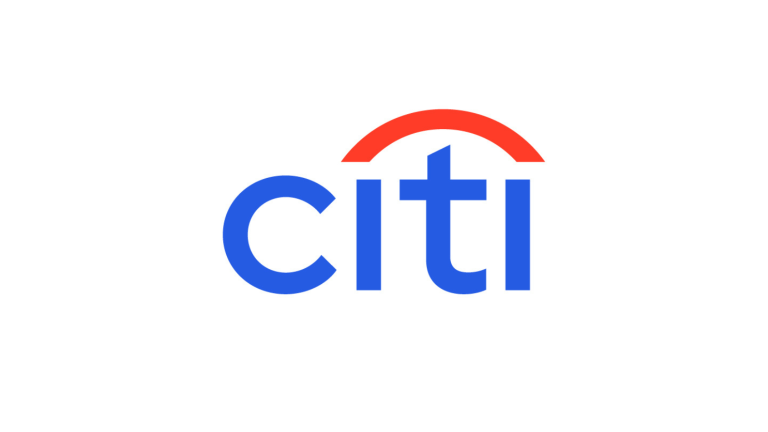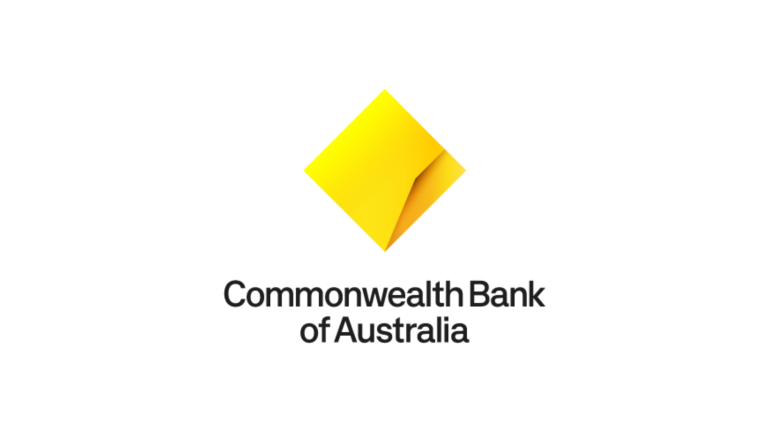| Coupon and Maturity (click for term sheet) | Outstanding (face value, AUD million) |
ISIN |
|---|---|---|
| 4.25% 21 April 2026 | 39,600 | AU000XCLWAI8 |
| 0.50% 21 September 2026 | 39,400 | AU0000106411 |
| 4.75% 21 April 2027 | 39,400 | AU3TB0000135 |
| 2.75% 21 November 2027 | 36,000 | AU000XCLWAQ1 |
| 2.25% 21 May 2028 | 37,900 | AU000XCLWAR9 |
| 2.75% 21 November 2028 | 44,300 | AU000XCLWAU3 |
| 3.25% 21 April 2029 | 42,000 | AU3TB0000150 |
| 2.75% 21 November 2029 | 44,500 | AU000XCLWAX7 |
| 2.50% 21 May 2030 | 41,000 | AU0000013740 |
| 1.00% 21 December 2030 | 43,800 | AU0000087454 |
| 1.50% 21 June 2031 | 43,200 | AU0000047003 |
| 1.00% 21 November 2031 | 44,500 | AU0000101792 |
| 1.25% 21 May 2032 | 43,200 | AU0000075681 |
| 1.75% 21 November 2032 | 32,500 | AU0000143901 |
| 4.50% 21 April 2033 | 26,700 | AU000XCLWAG2 |
| 3.00% 21 November 2033 | 28,200 | AU0000217101 |
| 3.75% 21 May 2034 | 25,000 | AU0000249302 |
| 4.25% 21 June 2034 | 10,000 | AU3TB0000200 |
| 3.50% 21 December 2034 | 29,200 | AU0000274706 |
| 2.75% 21 June 2035 | 30,850 | AU000XCLWAM0 |
| 4.25% 21 December 2035 | 22,900 | AU0000345241 |
| 4.25% 21 March 2036 | 22,100 | AU0000381832 |
| 4.25% 21 October 2036 | 16,000 | AU0000407256 |
| 3.75% 21 April 2037 | 21,300 | AU3TB0000192 |
| 3.25% 21 June 2039 | 11,200 | AU000XCLWAP3 |
| 2.75% 21 May 2041 | 15,600 | AU0000018442 |
| 3.00% 21 March 2047 | 14,200 | AU000XCLWAS7 |
| 1.75% 21 June 2051 | 20,200 | AU0000097495 |
| 4.75% 21 June 2054 | 11,300 | AU0000300535 |
Treasury Bonds on issue as at 12 December 2025. This table is updated weekly.
The Information Memorandum for Treasury Bonds (PDF) provides detailed information about Treasury Bonds including the terms and conditions of their issue.
Similar to most fixed income securities in Australia, Treasury Bonds are quoted and traded on a yield to maturity basis rather than on a price basis. This means the price is calculated by inputting the yield into the appropriate pricing formula.
The price per $100 face value is calculated using the following pricing formulae:
(1) Basic formula
\(\Large P = v^\frac{f}{d}\left(g \left( 1 + \require{enclose}a_{\enclose{actuarial}{n}} \right) + 100 v^{n} \right)\)
(2) Ex-interest formula
\(\Large P = v^\frac{f}{d}\left(g \require{enclose}a_{\enclose{actuarial}{n}} + 100 v^{n} \right)\)
The ex-interest period for Treasury Bonds is seven calendar days. With ex-interest Treasury Bonds the next coupon payment is not payable to a purchaser of the bonds. In this case, calculation of an ex-interest price is effected by the removal of the '\( 1 \)' from the term:
\( \large 1+\require{enclose}a_{\enclose{actuarial}{n}}\)
in formula \( (1) \), thereby adjusting for the fact that the purchaser will not receive a coupon payment at the next interest payment date.
(3) Near-maturing bonds formula (between the record date for the second last coupon and the record date for the final coupon)
\(\Large P = \LARGE \frac{100 + g}{1 + \left(\frac{f}{365}\right) i}\)
When a Treasury Bond goes ex-interest for the second last time it is treated as a special case. In this case formula (3) applies up until the record date for the final interest payment. There may be a slight discontinuity in the progress of the price of the bond around the time the bond goes ex-interest for the second last time but market participants can, if they wish, allow for this in their trading.
Where the maturity date coincides with a weekend or public holiday, the commonly accepted practice is to price near-maturing Treasury Bonds according to the actual date the principal and final interest are paid (and not the nominal maturity date).
(4) Near-maturing bonds formula (between the record date for the final coupon and maturity of the bond)
\(\Large P = \LARGE \frac{100}{1 + \left(\frac{f}{365}\right) i}\)
When a Treasury Bond goes ex-interest for the last time it is treated as a special case. In this case formula (4) applies from the time the bond goes ex-interest for the final time.
Where the maturity date coincides with a weekend or public holiday, the commonly accepted practice is to price near-maturing Treasury Bonds according to the actual date the principal and final interest are paid (and not the nominal maturity date).
In these formulae:
\(\large P=\) the price per $100 face value. \( P \) is rounded to three decimal places in formulae (1) and (2), and unrounded in formulae (3) and (4).
\(\large i=\) the annual percentage yield to maturity divided by 200 in formulae (1) and (2), or the annual percentage yield to maturity divided by 100 in formula (3) and (4).
\(\large v=\LARGE\frac{1}{1 + i} \)
\(\large f=\) the number of days from the date of settlement to the next interest payment date in formulae (1) and (2) or to the maturity date in formulae (3) and (4). In formulae (3) and (4), if the maturity date falls on a non-business day, the next good business day (as defined in the Information Memorandum) is used in the calculation of \(f\).
\(\large d=\) the number of days in the half year ending on the next interest payment date.
\(\large g=\) the half-yearly rate of coupon payment per $100 face value.
\(\large n=\) the term in half years from the next interest payment date to maturity.
\(\large \require{enclose}a_{\enclose{actuarial}{n}}=\large v + v^2 + ... + v^n = \LARGE \frac{1 - v^n}{i}\) \( . \mathrm{Except \, if\ \,} i = 0 \ \mathrm{\,then\,}\ \require{enclose}a_{\enclose{actuarial}{n}} = n \)
Worked Examples
(1) Basic formula
Consider the 2.75% 21 November 2029 Treasury Bond, with a yield to maturity of 1.10 per cent and settlement date of 12 September 2019.
\(\Large P = v^\frac{f}{d}\left(g \left( 1 + \require{enclose}a_{\enclose{actuarial}{n}} \right) + 100 v^{n} \right)\)
where:
\( \large\ i=\Large\frac{1.10}{200}= \) \(\large 0.0055\)
\( \large\ v=\Large\frac{1}{1+i}=\frac{1}{1+0.0055}= \) \(\large 0.99453\)
\(\large \require{enclose}a_{\enclose{actuarial}{n}}=\Large \frac{1 - v^n}{i}=\frac{1-0.99453^{20}}{0.0055}=\)\(\large 18.8904\)
\( \large\ f = 70 \), the number of days from 12 September 2019 to 21 November 2019
\( \large\ d = 184 \), the number of days from 21 May 2019 to 21 November 2019
\( \large\ g =\Large\frac{2.75}{2}= \) \(\large 1.375\)
\( \large\ n = 20\), the number of half years from 21 November 2019 to 21 November 2029
\(\Large P = v^\frac{f}{d}\left(g \left( 1 + \require{enclose}a_{\enclose{actuarial}{n}} \right) + 100 v^{n} \right) = 0.99453^\frac{70}{184}\left(1.375 \left( 1 + 18.8904\right) + 100\times0.99453^{20} \right)\)
\(\Large P = 116.716\)
(2) Ex-Interest formula
Consider the 2.50% 21 May 2030 Treasury Bond, with a yield to maturity of 1.10 per cent and settlement date of 15 November 2019.
\(\Large P = v^\frac{f}{d}\left(g \left( \require{enclose}a_{\enclose{actuarial}{n}} \right) + 100 v^{n} \right)\)
where:
\( \large\ i=\Large\frac{1.10}{200}= \) \(\large 0.0055\)
\( \large\ v=\Large\frac{1}{1+i}=\frac{1}{1+0.0055}= \) \(\large 0.99453\)
\(\large \require{enclose}a_{\enclose{actuarial}{n}}=\Large \frac{1 - v^n}{i}=\frac{1-0.99453^{21}}{0.0055}=\)\(\large 19.78135\)
\( \large\ f = 6 \), the number of days from 15 November 2019 to 21 November 2019
\( \large\ d = 184 \), the number of days from 21 May 2019 to 21 November 2019
\( \large\ g =\Large\frac{2.50}{2}= \) \(\large 1.25\)
\( \large\ n = 21\), the number of half years from 21 November 2019 to 21 May 2030
\(\Large P = v^\frac{f}{d}\left(g \left( \require{enclose}a_{\enclose{actuarial}{n}} \right) + 100 v^{n} \right) = 0.99453^\frac{6}{184}\left(1.25 \left( 19.78135\right) + 100\times0.99453^{21} \right)\)
\(\Large P = 113.827\)
(3) Near-maturing bonds formula (between the record date for the second last coupon and the record date for the final coupon)
Consider the 2.75% 21 October 2019 Treasury Bond, with a yield to maturity of 1.00 per cent and settlement date of 26 September 2019.
\(\Large P = \LARGE \frac{100 + g}{1 + \left(\frac{f}{365}\right) i}\)
where:
\( \large\ i=\Large\frac{1.00}{100}= \) \(\large 0.01\)
\( \large\ f = 25 \), the number of days from 26 September 2019 to 21 October 2019
\( \large\ g =\Large\frac{2.75}{2}= \) \(\large 1.375\)
\(\Large P = \LARGE \frac{100 + g}{1 + \left(\frac{f}{365}\right) i}=\frac{100+1.375}{1+\left(\frac{25}{365}\right) \times0.01}\)
\(\Large P = 101.305613\)
(4) Near-maturing bonds formula (between the record date for the final coupon and maturity of the bond)
Consider the 2.75% 21 October 2019 Treasury Bond, with a yield to maturity of 1.00 per cent and settlement date of 16 October 2019.
\(\Large P = \LARGE \frac{100}{1 + \left(\frac{f}{365}\right) i}\)
where:
\( \large\ i=\Large\frac{1.00}{100}= \) \(\large 0.01\)
\( \large\ f = 5 \), the number of days from 16 October 2019 to 21 October 2019
\(\Large P = \LARGE \frac{100}{1 + \left(\frac{f}{365}\right) i}=\frac{100}{1+\left(\frac{5}{365}\right) \times0.01}\)
\(\Large P = 99.986303\)
Record Date Examples
Example 1
The 2.25% 21 May 2028 Treasury Bond makes a Coupon Interest Payment on Tuesday, 21 May 2024. The Record Date for this Coupon Interest Payment is Monday, 13 May 2024.
Example 2
The 4.25% 21 April 2026 Treasury Bond makes a Coupon Interest Payment on Monday, 21 October 2024. The Record Date for this Coupon Interest Payment is Friday, 11 October 2024 (ten days prior to the Coupon Interest Payment Date, since the date eight days prior to the Coupon Interest Payment Date falls on a weekend).
Market makers
There is an active secondary market for Treasury Bonds. These institutions (listed alphabetically) have indicated that they make markets in Treasury Bonds. The level of activity can vary between institutions.





London: +44 20 7986 9521












